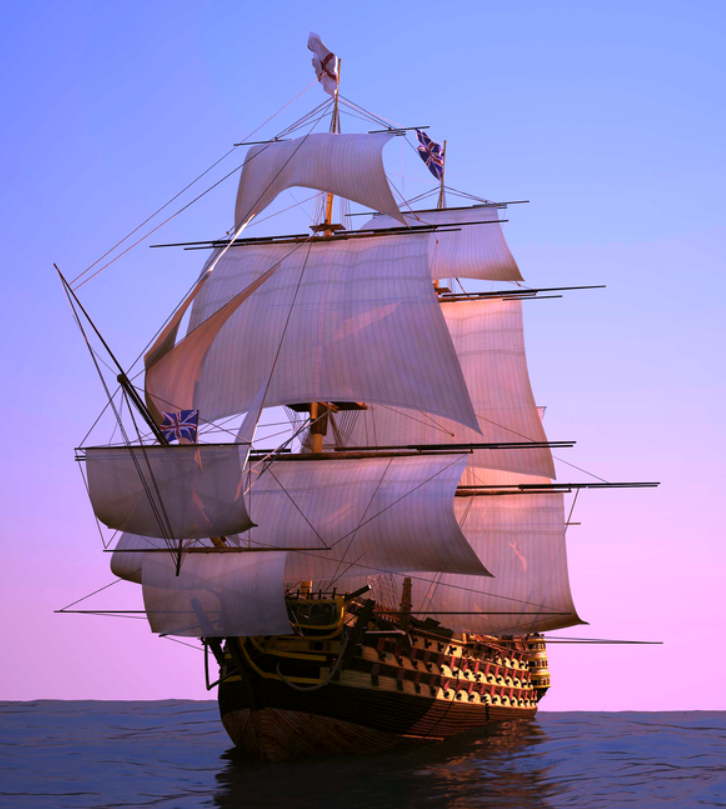- UNITS
- Unit 4 - The Rules of Oleron
- The Game of Words
- Prof. Quinn and Paul's Conversation
- Eloquence
- Latin Phrases
- Language Knots
- Test Corner
- LEARNING

♦ This introductory exercise aims to give you a feel for the sound and rhythm of the language, whilst presenting an overview of the maritime topic at hand. ♦ By reading and then listening to the accompanying audio, you’ll discover how words are pronounced and some simple sentence structures. ♦ Once you are comfortable with how the written and spoken words are connected, you’ll be ready to focus on keywords in the next exercise.
The Rules of Oleron
More than the others discussed in the last unit, the Rôles d’Oléron, or ‘Rules of Oleron’, are arguably the most significant and solid stepping stone from history into modern maritime law.
The origin of the Rules of Oleron is not entirely clear. ‘Rôles’ refers to how the laws were first written on parchment, rolled into a scroll, and put in a case, so that they could safely travel by sea. The name Oleron refers to an island just off La Rochelle in Western France.
In history, the Rules of Oleron were connected with Eleanor of Aquitaine, who was queen of France and England in the middle of the 12th century, and her son King Richard I, ‘the Lionheart’, of England, Normandy, and Aquitaine. The theories say that these rulers became interested in maritime law during their involvements with the crusades, and then wrote out the maritime code. However, it’s most likely that the Rules of Oleron were really a collection of oral customs from merchant communities through North-Western Europe, as their simple and plain language suggests. They were written down from 1160 onwards, and then officially announced by Lady Eleanor, and further declared and spread by King Richard.
The rules were first compiled to control the transport of wine from France to Britain. The rulings were really merchant maritime laws more than general principles of maritime law. The rulings are very focused on practical issues around ship security, relations between the crew and the captain, and the status and ownership of cargo at sea. They are also case law, which means the rules are formed from previous judgements on certain disputes which set a precedent for similar future disputes. The court that made all these judgements was the Atlantic Seaman’s Guild on the island of Oléron.
The first version had 24 articles, but it was enlarged in the sixteenth century as the law developed, the English King Edward III published the Rules of Oleron in 1351 which then brought them into English common law. Whilst in 1364, the French King Charles V gave privileges to foreign merchants using the Rules of Oleron. Their recognition in the most powerful royal courts of North-Western Europe meant that they became the dominant maritime code in the region. Besides English and French, the Rules of Oleron were also translated into Flemish, Dutch, and Scottish.
The French and British Empires then went on to become the two most powerful and largest maritime empires of the next few centuries. This meant that the Rules of Oleron were effectively spread over much of the world, becoming central to the maritime laws of new states throughout America, Africa and Asia. This is the reason for their global significance today; they have tied the Old World and the New World into the same set of maritime laws.
